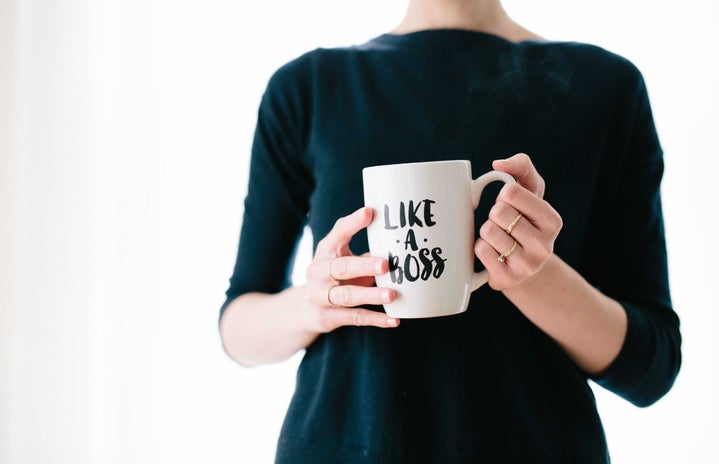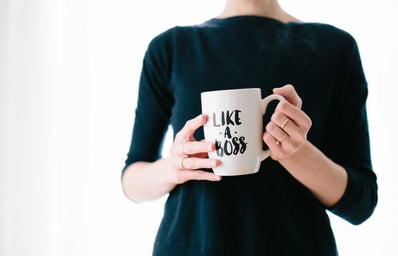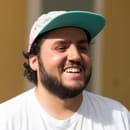With the internet being so easy to access, it has become easier for independent artists to find an audience and let their work be known. As a result, a variety of movements, collectives, and scenes have found a way to pave their path. The independent art scene in Puerto Rico is no different. Recently, many artists from a variety of disciplines have found platforms that have made it easier for them to share their work. In addition, small businesses such as Electroshock in Santurce and Rio Piedras, bars like Off The Wall in Mayaguez, and libraries like La Casita Books and Gifts in Aguadilla have provided up-and-coming artists a space to display their talents. “Puerto Rican Women Killing It in the Independent Art Scene” is a series of interviews that provides a glimpse at some of the women who have recently gained recognition in the art scene. Though the artists are asked similar questions, some are asked queries surrounding their work, specifically.
Selina Williams is the owner and creator of Ankhari Crochet. Although, she designs her work in pen and paper, she would rather call herself a crochet artist, instead of a fashion designer, because it gives her a freedom to do the kind of work she chooses to do within the art of crochet itself.
(picture of the artist as found on her Instagram)
How did you discover your passion for crochet and fashion? Where does the name Ankhari come from?
Crocheting was something I stumbled upon in middle school; it’s not something new for me. I wasn’t sure what kind of style I wanted to get into at the time, so I learned the basics by watching older women make baby clothing and blankets. However, I never really enjoyed making baby attire. I think that’s what put me off from crocheting for so long. I didn’t want to add more of the same to the market and baby clothing didn’t represent me as a person. In short, I didn’t want to choose that as my artistic route. The name Ankhari is a combination of my favorite symbol, the Ankh, and the name Jabari. The ankh is an Egyptian symbol that connects the energy of both masculine and feminine with life and creation. Meanwhile, Jabari stands for courage, strength and confidence. I believe my pieces bring out these elements in women. I also plan on expanding to men and more so unisex wear. You can see how the name comes together with my ideas and my work. My inspiration for my work comes from lingerie, honestly; it’s one of my favorite things. I adore lingerie with my soul. Because there’s so much variety and color, you can express how you feel with your look, but to do this one has to exude and have confidence. This brings up my next point. Lingerie has a limited amount of attractive wear when it comes to bigger sizes. It’s very rare for women to find beautiful intimate or swimwear to fit a bigger sized bust or hips, well fitting all around. That’s where I come in. I want all women to feel that they can find something to wear, especially in crochet. Crochet you often find in stores in small sizes; I make all sizes. My goal is to fit as many sizes and bodies possible. Crochet is for all sizes and I will be sure to make a variety of sexy, cheeky, “problem area covering,” body shaping pieces so people can have control over what they wear, how they wear it, and where they wear it. All my pieces are very versatile and can be dressed up or down, worn as casual or night wear, or can be a beautiful bikini set on the beach or pool side.
I read on your Instagram page that you are half-Dominican and half-Puerto Rican. How has this influenced your work?
I was born in Bronx, New York and raised there for about a decade or so before I came here around 5th grade. Moving around a lot as a child between the States and my Caribbean grounds brought a lot to perspective when it comes to what I like wearing and how women are so diverse and different, liberated, and colorful with their looks. My Dominican side is a very colorful side; any color close to a highlighter will be used as lipstick and beautiful bright dresses and shirts and the shortest shorts they can find will be used because it’s so hot all the time. I feel like that’s where I get so much of my flare from. They wear anything and will still be the center of attention and I love Caribbean women for that. Their presence commands attention and what they wear does not shy away from the spotlight.
I’ve seen seen your work being modeled by women of all backgrounds, especially those who have noticeable African descent. How do you pick your models?
I choose women of all types. I choose to project diversity of women not only in body type, skin color, hair, etc. but also different lifestyles. Whether you are a student, stripper, have a 9-5 job, XXL or an XS. I believe women are multi dimensional and that is what I choose to carry in my brand. I want everyone who stumbles upon my page to find something they can point out and say “I can wear that.” I cater to the collective of women. I wouldn’t say African descent; more-so black features. I, as a black Caribbean woman, have a similar experience to others in which, at some point, I didn’t feel I was up to par with beauty standards growing up, and it took me a long time to get out of that hole. Making that part of my brand’s journey was necessary for me because being black and Caribbean mean being diverse. Growing up in the Dominican Republic, I had a neighbor who was pale as snow with freckles and green eyes and both of her parents were Dominican; her father was dark-skinned and her mother was of lighter complexion. I felt like it was only fair to have this shown in my models. One of my favorite girls is Melanie; she is a beautiful, thick woman with blue eyes and she is a black Caribbean. We need to stop sealing into a box what it means to be black, African, Caribbean, or Puerto Rican for that matter. We are the seasoning to the world. We can’t just keep replicating photos and models of one type without acknowledging what is really out there.
What do you think about the current state of the arts in Puerto Rico?
Modern day art has become somewhat mediocre since everyone today prefers to please the majority than being true to themselves. I guess I can say this is more of a true thing musically speaking, but I love the minority that pushes those boundaries while being sensitive to reality. They come back with resistance and keep firm to what they defend. Proof of this was when the Puerto Rican flag in Viejo San Juan was painted black and white. Semana de la Lengua, Encuentro de Tambores, artisan festivals, local musicians like ElBataJohn and iFé, are other examples. There is so much to be seen and heard in our land because so many choose to continue resisting mainstream and commercial art, keep tradition or turn old techniques new. We keep so much alive in our small sectors and young creatives experiment and expand on these mediums.
What do you think about the current state of the independent scene in Puerto Rico?
This is probably one of those answers I hate to answer. I am disappointed by how it is mistreated and devalued and continues to be as years go by. Our artwork is appreciated more by outsiders than our own people. This can be draining for aspiring artists. We live in a time where it isn’t so much about opportunity or talent, but rather not having the money to get it done in a time where it is “okay” to steal independent artists’ work, whether it’s music, painting, clothing, etc. In addition, the way our everyday life is overpriced takes away motivation and creativity. You are forced to work to survive and not do what you love. You study to make money to study something you will still be in love with 8 years from now. It’s sad because it limits people and children from growing into their actual potential. However, to a certain point I love it because you really see who has a deep and natural love for their craft because, no matter what the situation, we push through even with the least of resources, even if it takes more time it will get done.
I’ve noticed that you’ve done some modeling. Is there any other form of art you wish to pursue? If so, what field and why?
I am very hyper active when it comes to art. Modeling was a happy accident. I never really thought I was feminine enough to do so, but I always wanted to do it, and so I did and continue to do so. There have been many photoshoots done and there are many more to come. I was also in a music video for international artist Fuse ODG, but I was born and raised a dancer. I would love to get back to it because it has been years since I’ve learned an 8 count. I also do mosaics, which is ceramic work, and my favorite type of drawing is pointillism. I would also love to get into taxidermy and pottery as well. I used to blog about social issues, which I plan on getting back to doing soon. Honestly, there is a lot but those have to be my tops.
If a young girl came up to you and said she wanted to be an artist, what would be your advice for her?
Be true and firm to your art and don’t stop doing it. Have a clear list of things you want to do and make them happen. They won’t happen right away, but if you keep working, things will line up. Small progress is still progress. Never stop creating or you will lose yourself if you do. Once being a creative is part of your life it is like breathing; you stop doing it and you become stuck and enclosed. Half of the the things I’ve done and am doing I never thought would happen. At some point, they were only ideas and now they are concrete parts of my life. I’ve had so many important figures tell me these things throughout my life from my late father, dance teacher, and, of course, my best friend Eduardo Paz, creator of Kimpande Jewelry, who is an artisan and knows how difficult it can be to build for oneself.
What is your biggest goal right now?
I actually reached a couple of my goals. My main one in the beginning was to have all my work brought to life on models and in photography, then to have a small shop opening, which are both things that have and are happening. I will be having my first ever Pop-Up shop in San Patricio Pop from September 24 to 30th. My next goal, which is now in the works, is to make my official logo and drop my website where all my crochet wear can be purchased. If done properly, it will hopefully be dropped starting this upcoming year. For any further news you would have to keep up with me and see because I have so many ideas to manifest. Stick around and find out.
What do you seek to achieve with your work?
I actually achieved a glimpse of what was this goal since the beginning. My biggest motivation, one of my models, told me she hadn’t put on a bathing suite in three years until I shot her in my sets. That is what I want to achieve every time I sell or ship my pieces out. That to me was priceless and gave me strength to believe that I was moving in the right direction.
Find Selina Williams’ Ankhari Crochet on Instagram
All of the pictures in this article were provided by Williams, but taken by Chris McBride, except where noted.


